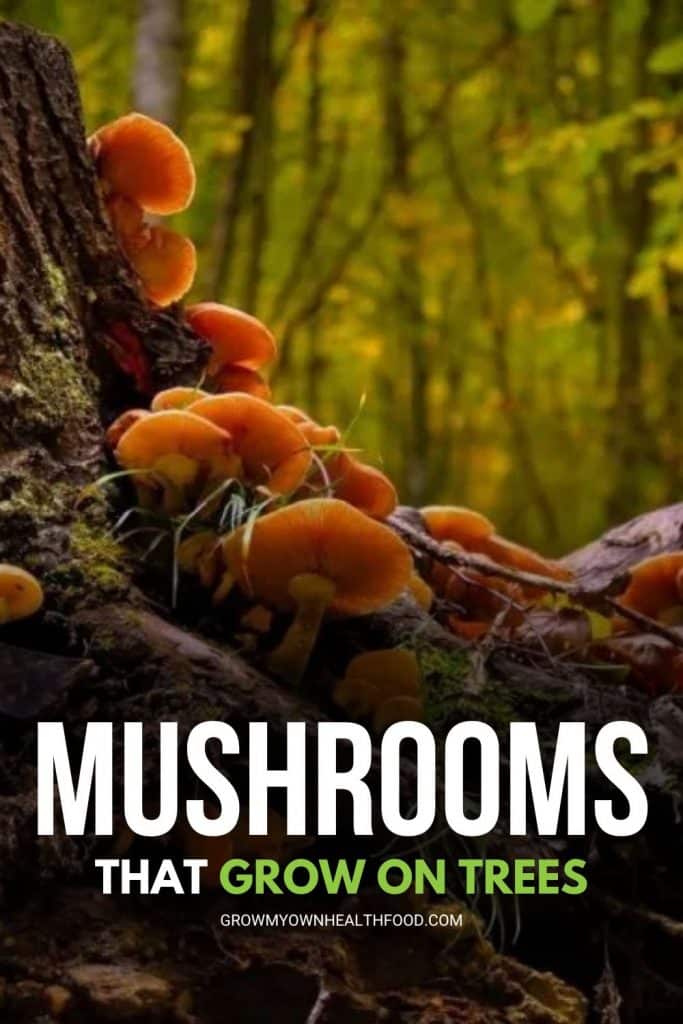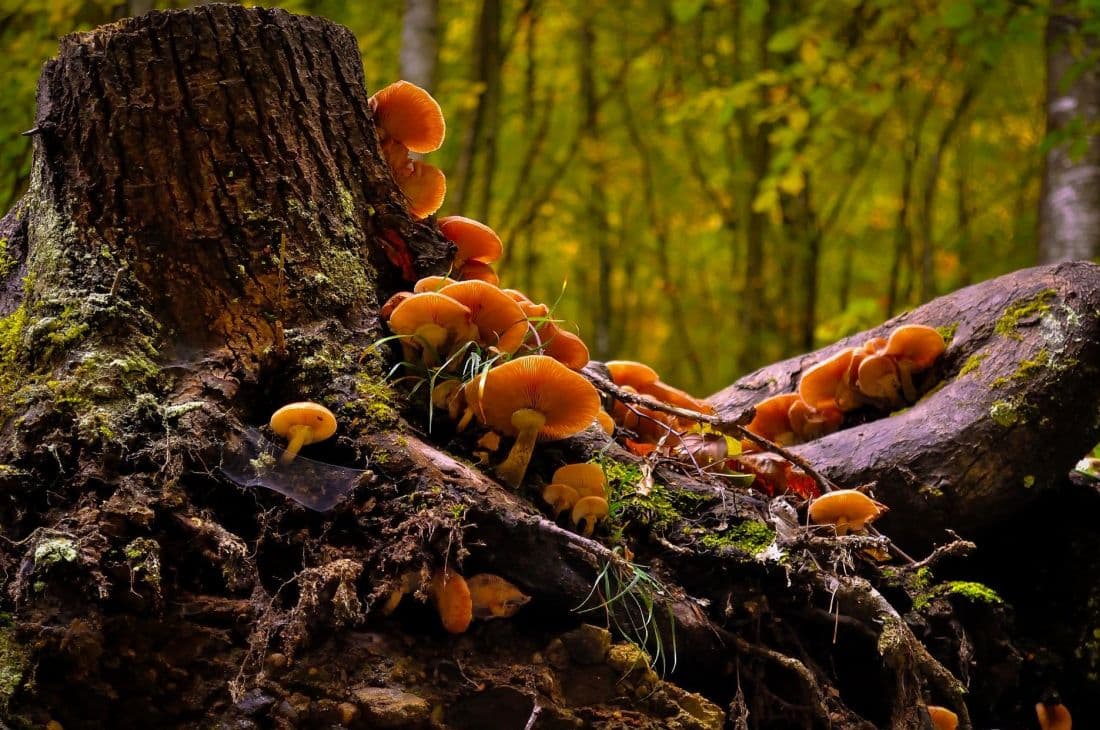Mushrooms are widely loved, people consume them raw or as use them as an ingredient in various kinds of cuisines. Whether it is a salad, an omelet, or pasta, mushrooms offer a unique taste that can elevate the taste of any dish. While it may seem dreamy to go out and pick your own mushrooms from the wild, it is also quite risky. Handpicking your own mushrooms demands extensive knowledge of their different kinds of varieties. While mushrooms can taste heavenly, if you accidentally get a non-edible variety, you will quickly regret your decision as well. Therefore, when it comes to mushrooms that grow on trees, it is imperative to be completely sure about the variety of mushroom you are handling.
What Are Mushrooms?
Mushrooms are essentially fruits of a bigger fungus growing underground. You will find mushrooms in an environment where there is plenty of decaying organic matter. Much like many plants and herbs, there are different types of mushrooms that grow in all sorts of places. Mushrooms that grow on trees may not be the most common kinds of mushrooms, but they still exist. Most of the time you will find mushrooms growing on the ground, which is why mushrooms that grow on trees have a different appearance and structure as well.
Why Do Mushrooms Grow on Trees?
A mushroom growing on a tree can indicate a couple things. A mushroom grows in areas where organic matter is decaying, which is why mushrooms on trees mean that the tree may not be healthy. There is a chance that fungi are festering inside the tree and are slowly devouring it. The tree may also be suffering from root damage which creates the perfect environment for a fungus attack. Therefore, it is possible that most of the mushrooms you see on trees are not mushrooms at all but bracket fungi. Such kinds of mushrooms continue growing on a living tree until it dies.
What Types of Mushrooms Grow on Trees?
A typical mushroom has a cap that sits on a stipe (stem or leg). On the other hand, mushrooms on trees will have distinctive features that will set them apart. Most will have little or no stem. All kinds of mushrooms (toxic/non-toxic) can grow on trees, which is why you should be aware of each type of mushroom that you can potentially encounter. Check all the pictures below to be able to recognize toxic and non-toxic mushrooms. Here is a list of some of the mushrooms that you can find growing on trees. Where applicable we will share articles for how to grow mushrooms in your backyard from this list.
Oyster Mushrooms
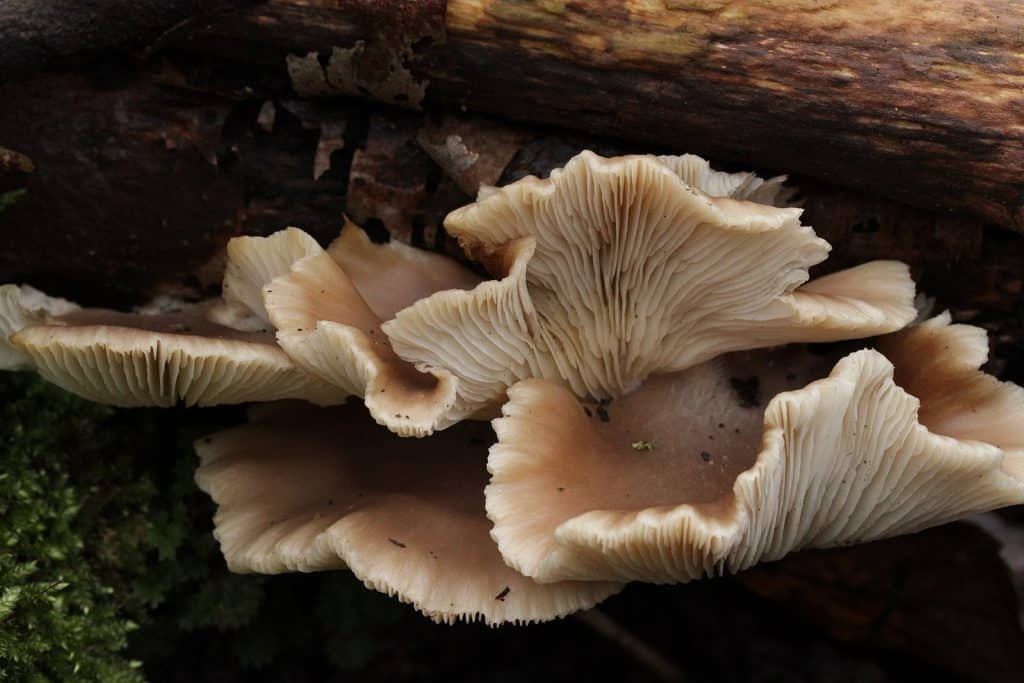
This is a non-toxic mushroom that you will usually find on a dying hardwood tree. This mushroom is actually found in a variety of regions and subtropical forests. Some countries grow oyster mushrooms commercially as well. This mushroom gets its name from its appearance as it looks like an oyster. It has a broad cap in the shape of a fan or an oyster with wavy margins. The mushroom can be white or gray or dark brown in color and is often used in pasta or stir-fry dishes.
Hoof Fungus Mushroom
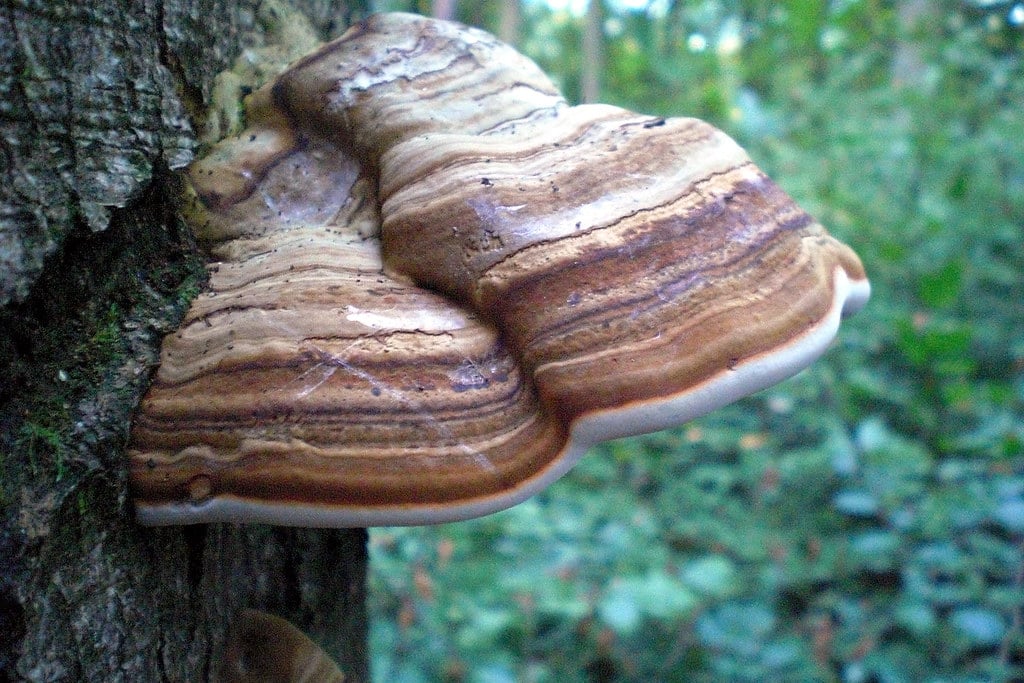
The hoof fungus mushroom is not edible and is also known as tinder conk or tinder fungus. This mushroom is harmful to the tree it grows on and can eventually cause the wood to rot. The mushroom has a large size which resembles a horse’s hoof. The color of this variety varies from gray to brown to almost black. While this mushroom is not edible, but the hoof fungus mushroom can be used as a tinder for a fire.
Artist’s Bracket Mushroom
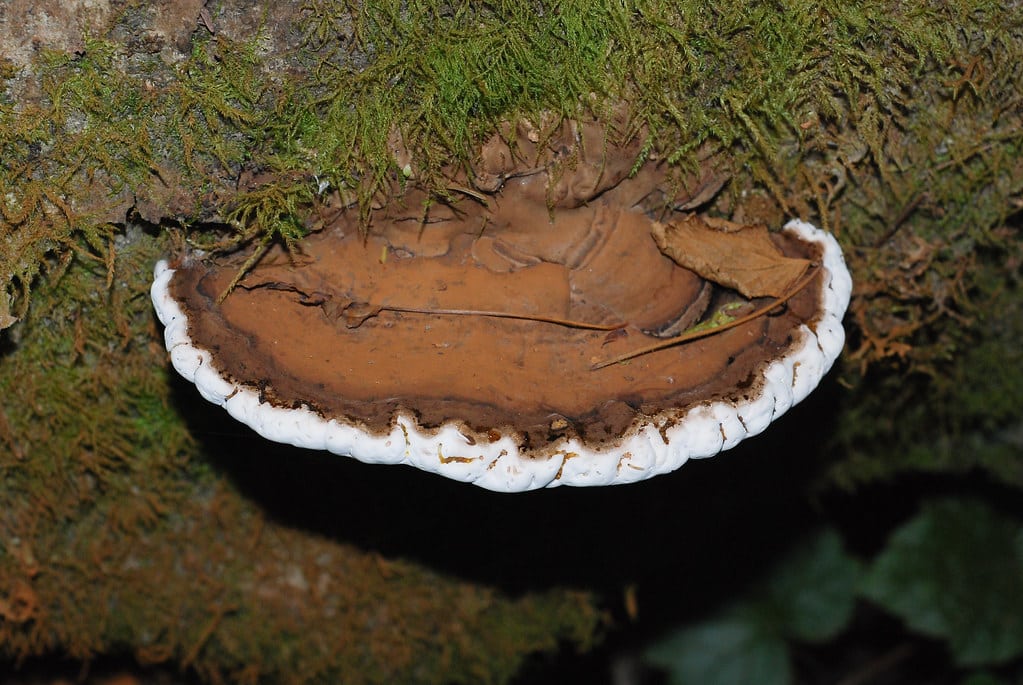
This mushroom can be found both on living and dead trees. Artist’s bracket is semicircular, rigid, and fan-shaped. Initially, it has a white color which then turns to dark brown over time. The Artist Bracket mushroom is not poisonous, but because of its tough structure and the fact that it tastes terrible I wouldn’t say it is edible. However, some people do use it in tea after drying and crushing it.
Lion’s Mane
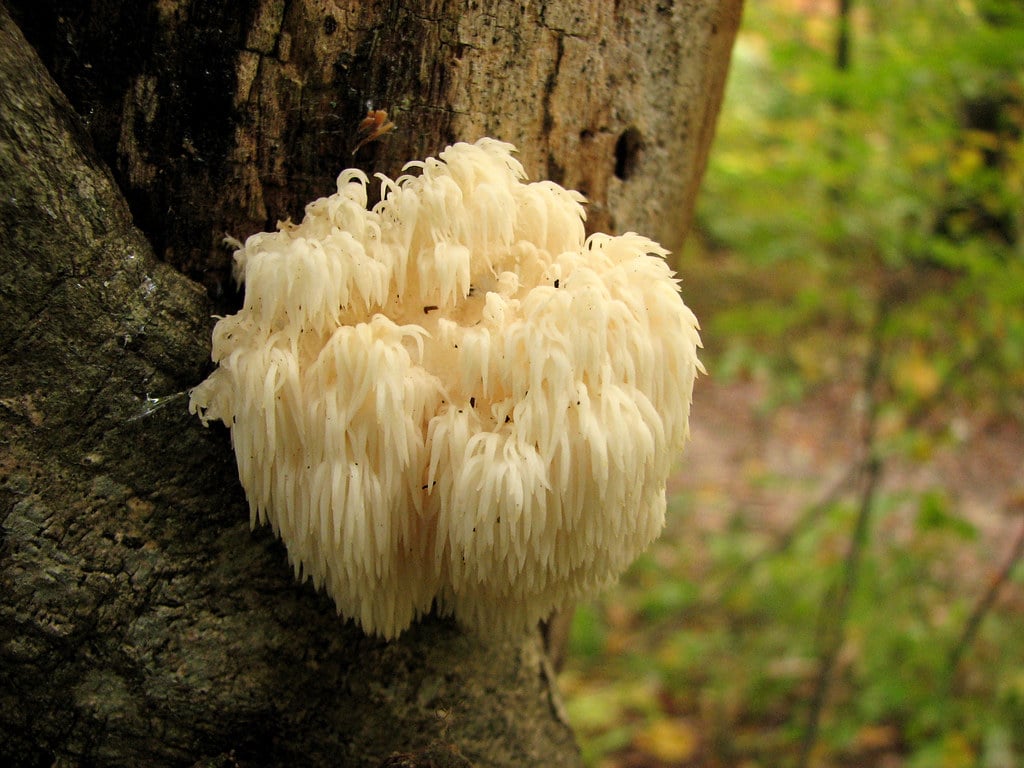
Native to Asia, North America, and Europe, this variety of mushrooms is also called a mountain-priest mushroom due to its unique appearance. Slightly resembling a frozen waterfall, you cannot miss this mushroom if you come across it in the woods. It can grow on either deadwood or living tree trunks. Lions’ mane is non-toxic and can live on the same tree for many years. It can be enjoyed raw or cooked. Click to read about growing Lion’s Mane mushrooms in your backyard.
Beefsteak Fungus
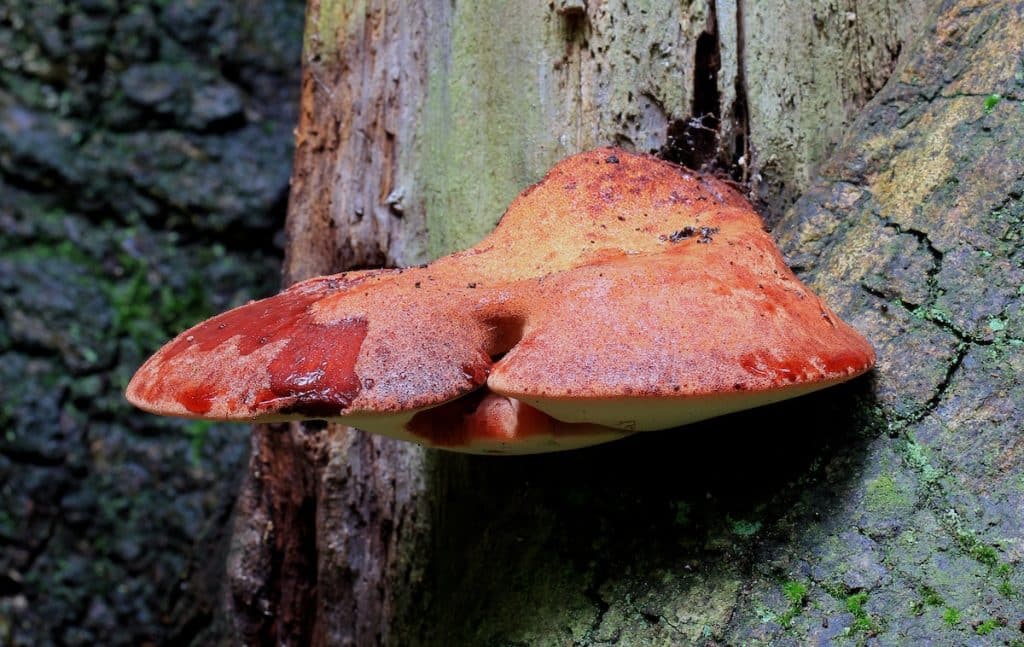
This mushroom is also known as tongue mushroom or ox tongue as it resembles a large tongue growing on a tree. The mushroom has a red color like that of meat, and when it is cut, it releases a red-colored juicy substance. Beefsteak fungus is also one of the few mushrooms that can be consumed raw. However, while fishing for these varieties, you must always go for the younger mushrooms. As this variety becomes older and more mature, it can develop a sour and acidic flavor. You will most commonly find this mushroom on sweet chestnuts and oaks.
Dryad’s Saddle

This mushroom is also called pheasant’s back mushroom and grows on hardwood trees. This mushroom can also be found on stumps and decaying logs. Usually, the mushrooms can grow in a shelf-like structure and can only be found in a group of two or three mushrooms. Dryad’s saddle tastes best when it is young. It can also be dried and powdered into small pieces and can be used in soups later on.
Hen of the Wood – (Chicken of The Woods)
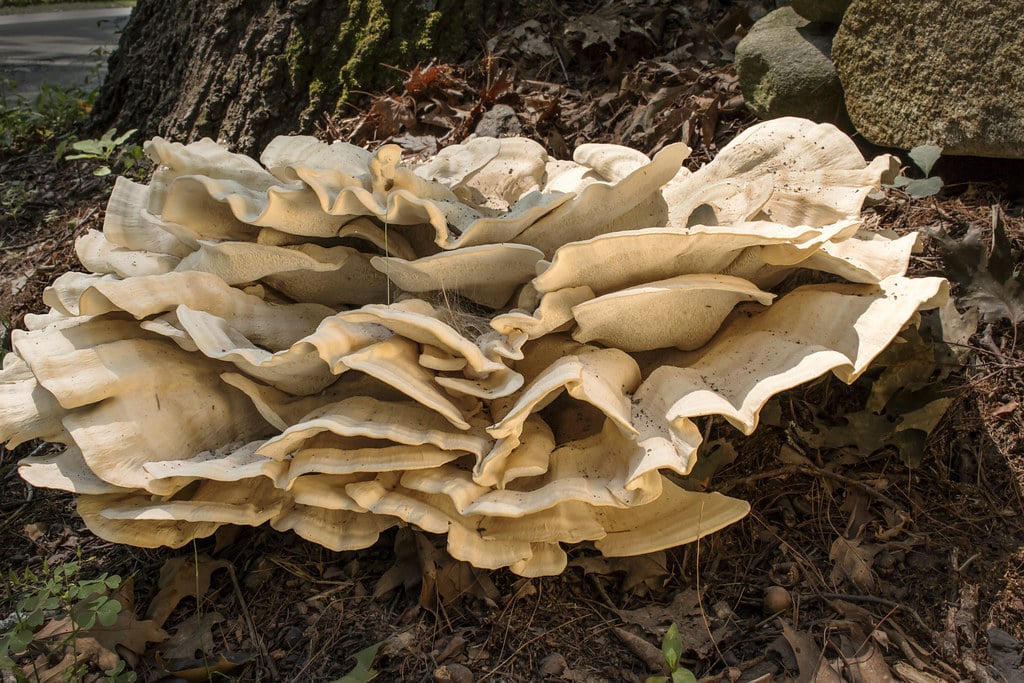
Also known as sheep’s head or chicken of the woods, this mushroom is a parasite of tree roots. You will find it growing in large clusters at the base of a tree (maple, oaks, etc.). These mushrooms have light brown colored caps with wavy margins. The reason why these mushrooms grow around the tree’s base is that they gain their nutrients from the roots of their host tree. However, these mushrooms do not kill their tree which is why they can be found growing at the same spot for several years. These mushrooms have a strong savory and earthy flavor and are best served cooked.
Honey Mushroom
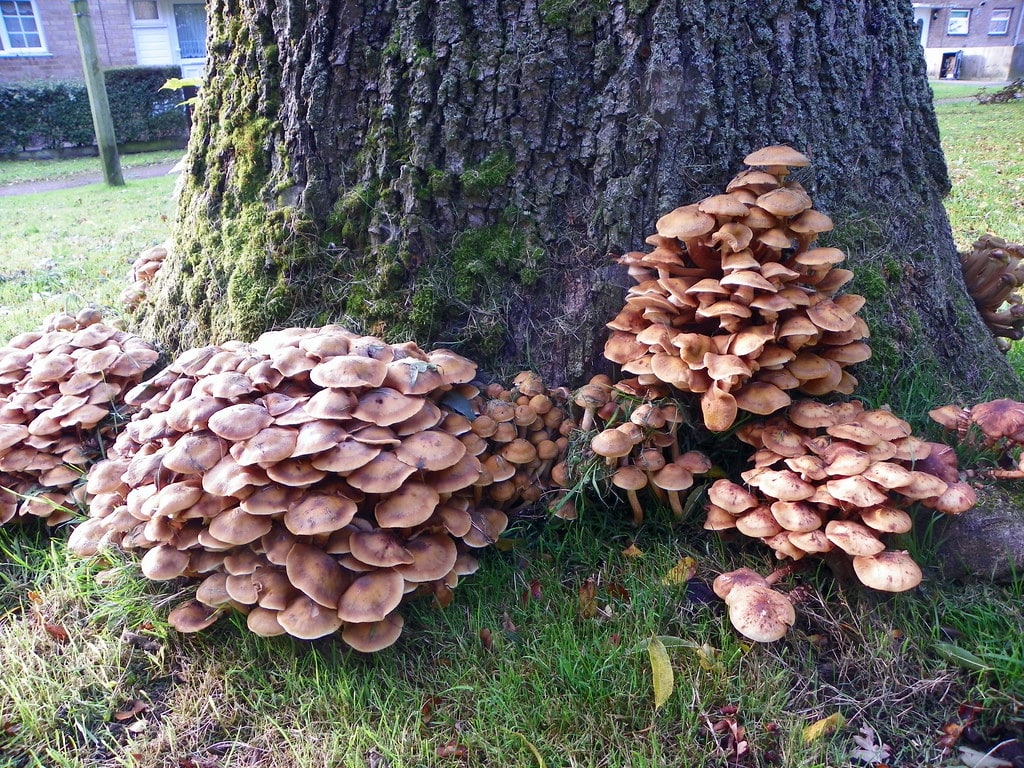
Honey mushroom is another non-toxic mushroom that is found in dense yellow clusters at the base of trees. These mushrooms are also known to be destructive forest pathogens. The name ‘honey’ does not refer to the mushroom’s taste, but rather it refers to the mushroom’s caps. This variety is considered a delicacy in many parts of the world because of its taste. Honey mushrooms can be harvested and preserved as well.
Which Mushrooms On a Tree Are Edible?
List of edible mushrooms growing on trees:
- Oyster
- Lion’s Mane
- Beefsteak
- Dryad’s Saddle
- Hen of the Wood
- Honey Mushroom
Mushrooms Growing on Trees – Final Word
If you have a backyard with plenty of trees, there is a chance that you might encounter one or two types of these mushrooms yourself. While such mushrooms might be fascinating for you to watch, we hope that you will keep your distance from any plant/herb that you cannot identify. In case you do find any mushrooms on trees, you should always be careful and consult an expert before consuming them. A good rule of thumb in such a scenario would be to identify the tree as it could help you identify the mushroom variety!
